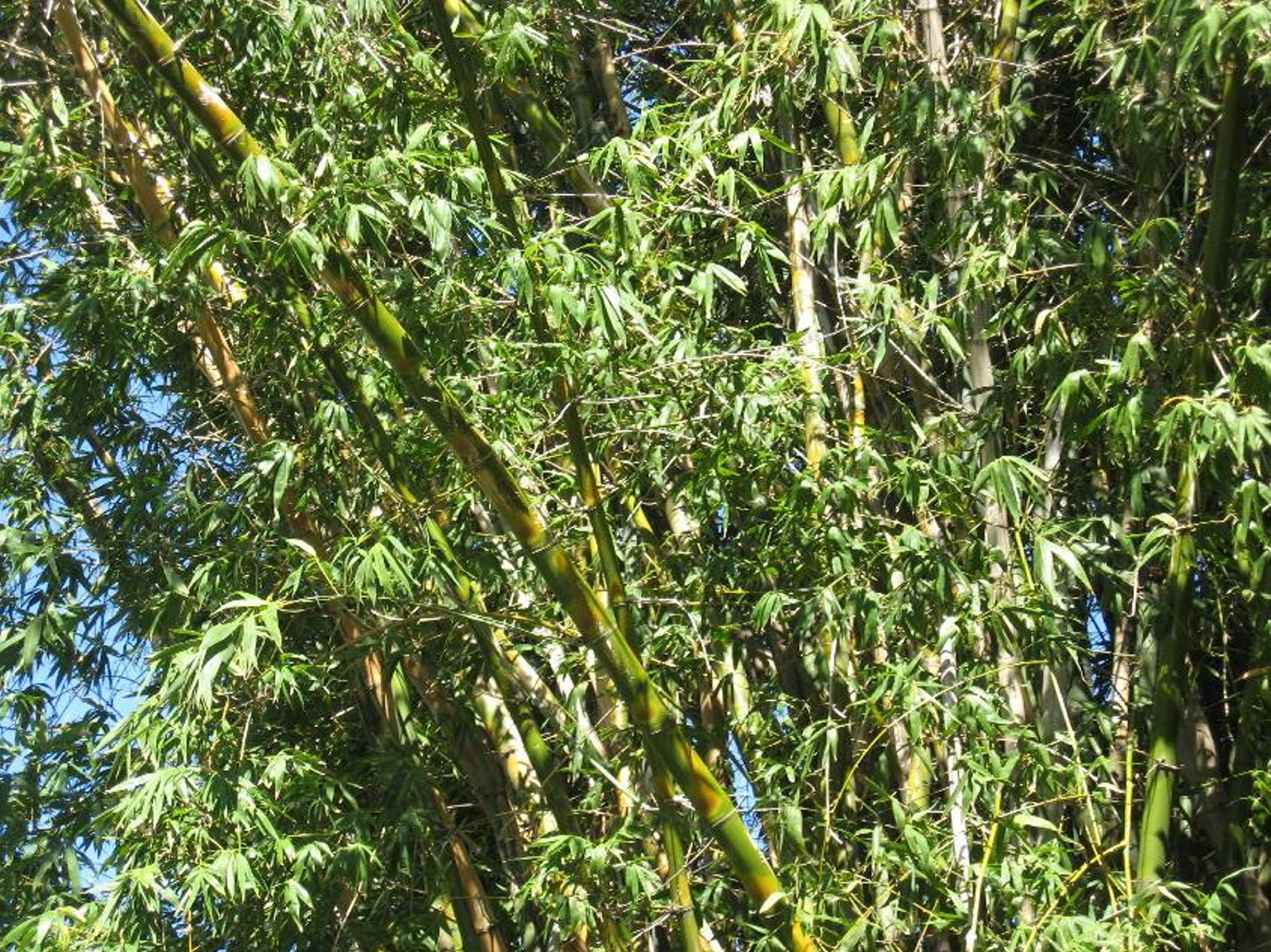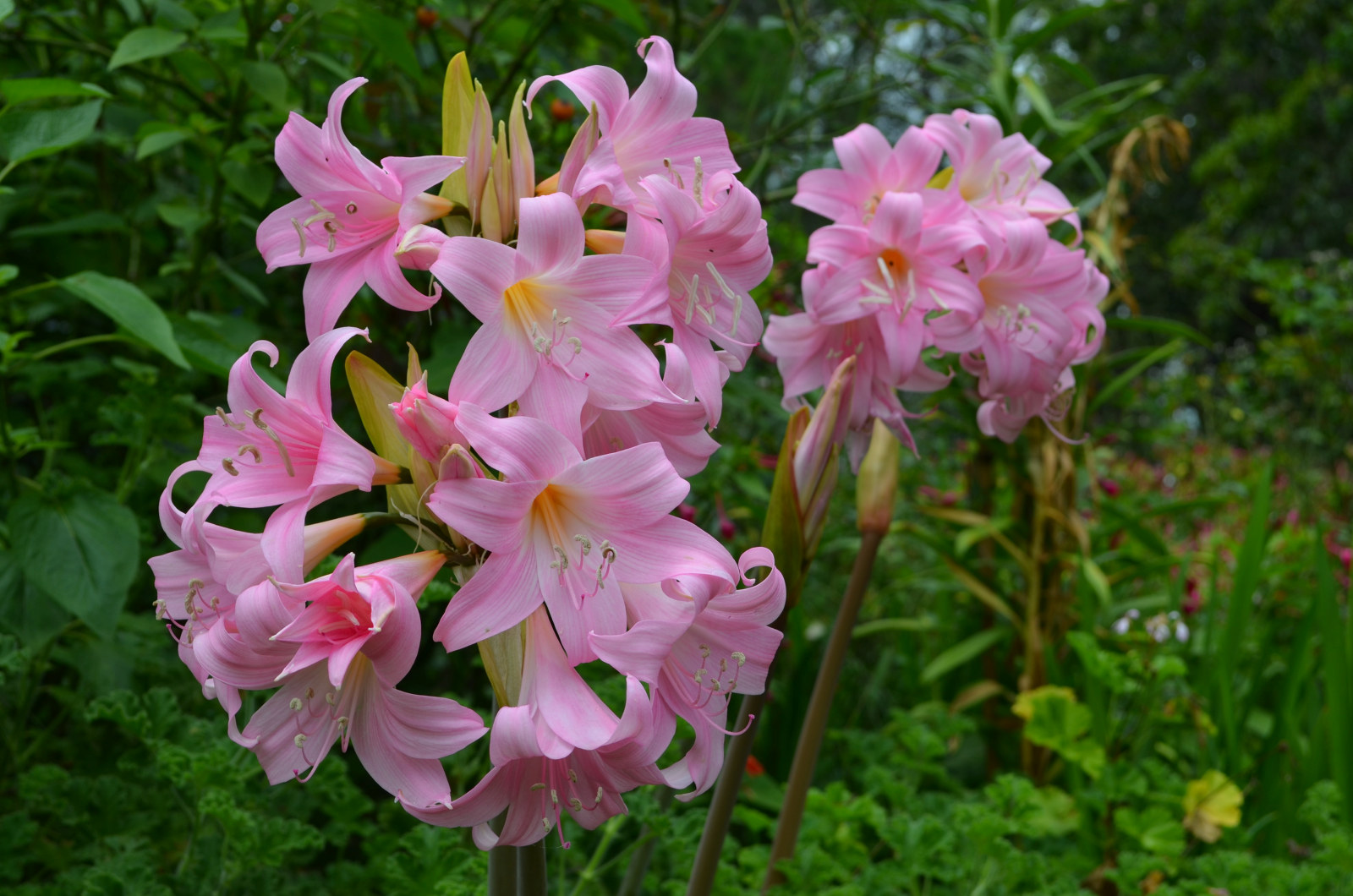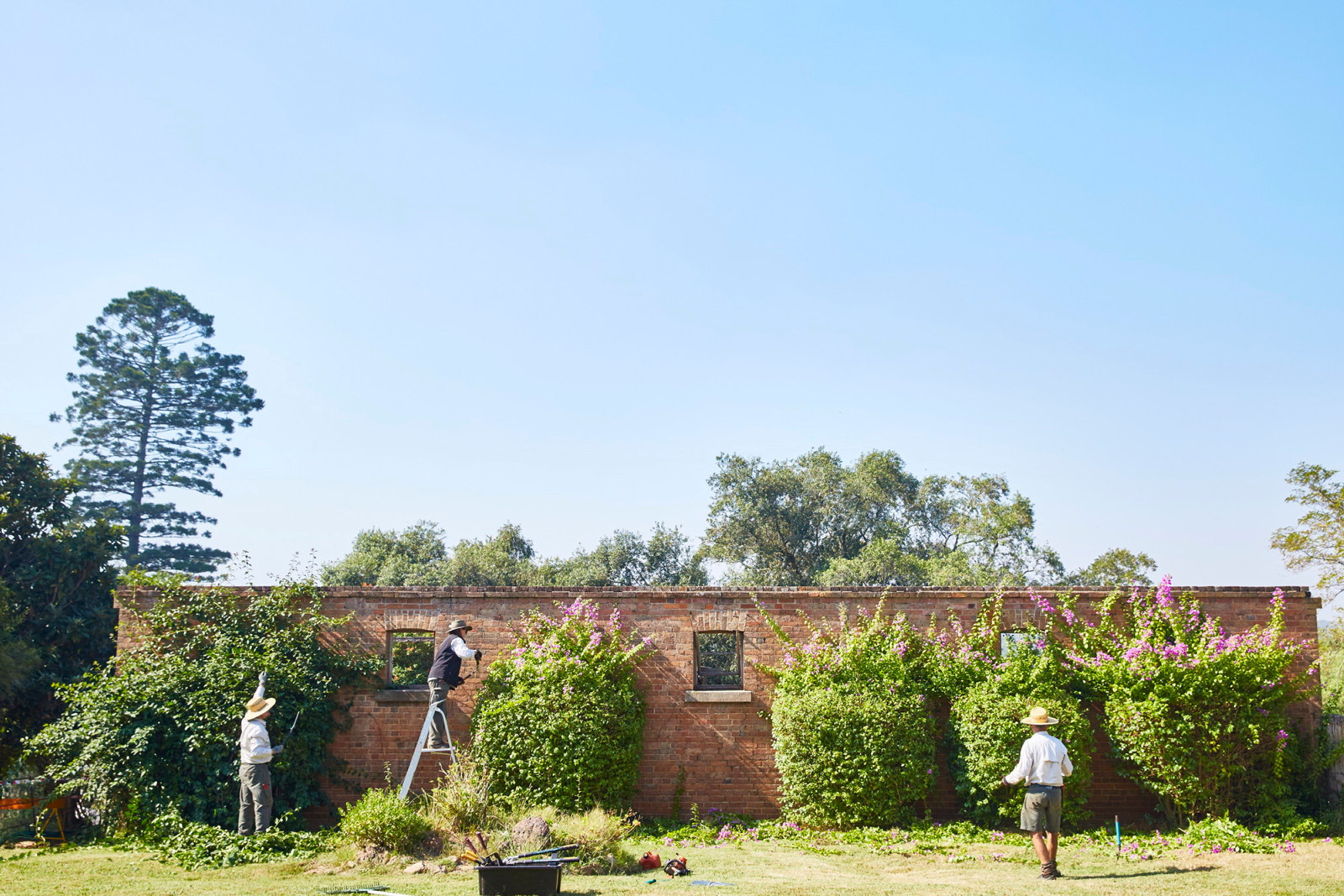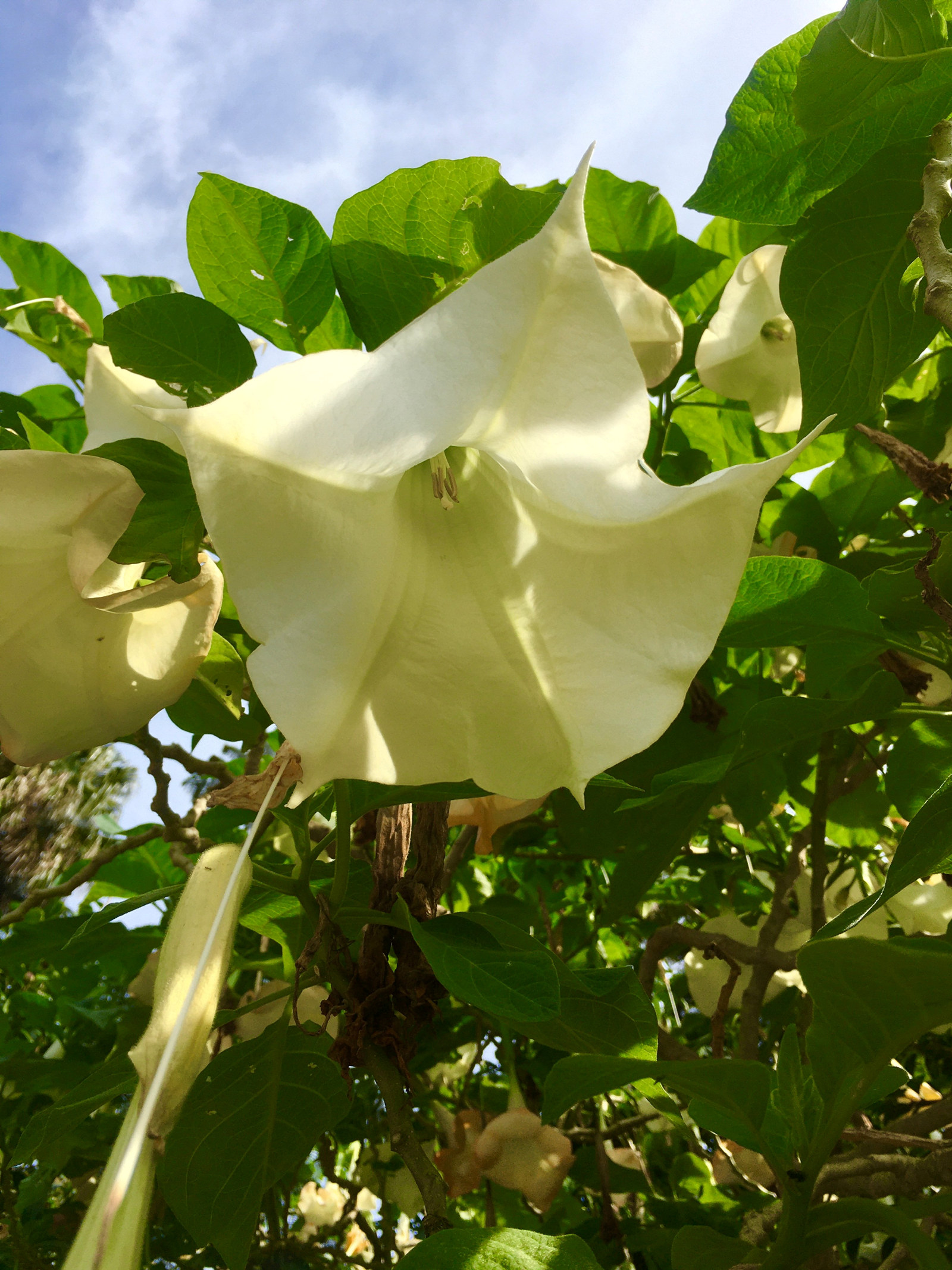Vaucluse House Plant Stand
In a sheltered corner of the verandah at Vaucluse House, a selection of choice Victorian-era house plants are displayed on this splendid four-tiered woven-wire étagère or plant stand.
Thought to date from about 1850, the plant stand was made in England and reflects the increasing range of consumer goods becoming available as a result of industrialisation. The plant stand features elaborate decoration, with pointed arches, scrolls and fans all made from wire applied to a wrought-iron frame.
These popular plant stands allowed tender plants that might not be able to be grown in the open garden to be cultivated and displayed close to the house. In Sydney with its warm humid climate, favourite subjects included achimenes, begonias, various bromeliads (such as the Vriesia philips-coburghii in the photo), fuchsias, succulents and orchids. If water was scarce these plants might be cared for more lovingly with additional water splashed around to keep them looking at their best.
For authenticity we use old-fashioned clay pots of a type known as ‘Long Toms’ that were made in England from at least the middle of the 18th century onwards. Their main drawback is that they dry out very quickly and draw moisture out of the potting mixture, so you have to pay attention to regular watering, otherwise the plants can become water-stressed very quickly. Clay pots filled with soil are also much heavier than modern plastic pots.
As well as allowing a visually pleasing display of foliage and flowers, the open wire plant stand allows plenty of light to reach all parts to promote strong plant growth and also ensures good air circulation that prevents mildew and fungal diseases.
A shady verandah has long been a favourite spot to grow and display fancy foliage plants, as you can see in these three late 19th-century photographs of homes in Gundagai, Taree and Townsville. Wirework plant stands of a simpler form than the Vaucluse House example can be seen at the Gundagai and Taree houses; while at the bank manager’s house in Melton Hill, Townsville, tropical foliage plants like Caladiums, Dieffenbachia, Hoyas and Blechnum ferns are arranged on stout timber staging out of the heat and bright sun of the tropics.
Published on
Related
Browse all
Plant your history
Beautiful bountiful bamboo
One of the most recognisable plants growing at Museums of History NSW today is bamboo. This colourful plant has a long history in colonial gardens

Plant your history
Sumptuous cape bulbs light up late summer gardens
Belladonna Lilies and Crinum Lilies are tough bulbs that never say die and can survive years of neglect

Plant your history
In good hands
A week with the Gardens team shows historic garden conservation at its most hands-on

Plant your history
Angel’s Trumpet (Brugmansia arborea) at Vaucluse House
Angel’s Trumpet (Brugmansia arborea) is a beautiful perennial shrub native to South America. It was introduced to the colony from Rio de Janeiro for its attractive trumpet flowers
